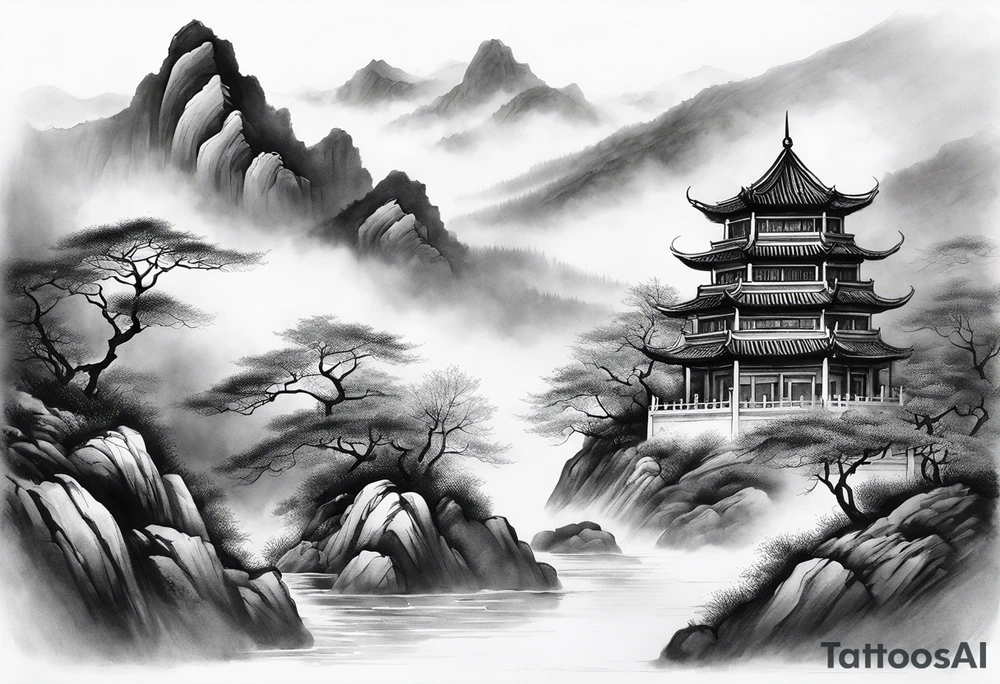Chinese calligraphy is not just an art form—it's a language of the soul, a visual philosophy that has shaped Chinese identity for centuries. At China Art Hub, we celebrate the elegance, complexity, and enduring relevance of Chinese calligraphy by offering a rich variety of tools and educational content tailored for enthusiasts, learners, and seasoned artists.
Explore how this ancient practice continues to thrive, its tools evolve, and how you can become part of this expressive journey through modern resources and traditional wisdom.
What Is Chinese Calligraphy?
Chinese calligraphy is the art of writing Chinese characters with brush and ink in a way that emphasizes beauty, rhythm, and spirit. It is deeply rooted in the development of Chinese characters over 3,000 years. Each stroke, each form is guided by centuries of philosophy, aesthetics, and personal expression.
Core Styles of Chinese Calligraphy
| Calligraphy Style | Chinese Name | Key Characteristics | Historical Period |
|---|---|---|---|
| Seal Script | 篆书 (Zhuànshū) | Rounded and formal | Qin Dynasty |
| Clerical Script | 隶书 (Lìshū) | Flat and angular | Han Dynasty |
| Regular Script | 楷书 (Kǎishū) | Clear and structured | Wei–Jin Period |
| Running Script | 行书 (Xíngshū) | Flowing, semi-cursive | Jin Dynasty |
| Grass Script | 草书 (Cǎoshū) | Abstract and fast | Han Dynasty onward |
These styles reflect evolving cultural ideals, from imperial formality to artistic spontaneity.
Essential Tools for Practicing Chinese Calligraphy
Known as the “Four Treasures of the Study” (文房四宝), these include:
-
Brush (筆): Varying in stiffness and size, brushes are the primary instrument of calligraphy.
-
Ink (墨): Traditionally in solid sticks, ground with water on an ink stone.
-
Paper (紙): Often rice paper or Xuan paper, prized for its absorbency and texture.
-
Inkstone (硯): A flat surface used to grind ink sticks with water.
At China Art Hub, we offer a curated collection of traditional and contemporary versions of these tools, crafted by artisans and suitable for all skill levels.
Why Chinese Calligraphy Still Matters Today
-
Cultural Identity: Chinese calligraphy is seen as a symbol of cultural continuity and heritage.
-
Mental Discipline: The act of writing with a brush enhances patience, concentration, and inner calm.
-
Aesthetic Pursuit: Calligraphy has evolved into a modern visual art displayed in homes, galleries, and public spaces.
-
Educational Value: It fosters literacy, history appreciation, and personal expression.
How China Art Hub Enhances Your Calligraphy Journey
At China Art Hub, we make it easy to begin or advance your Chinese calligraphy practice with:
-
High-quality supplies that meet both traditional and contemporary needs
-
Educational guides for beginners, covering strokes, posture, and basic scripts
-
Insights into calligraphy’s link with Chinese painting, poetry, and philosophy
-
Expert reviews and artisan stories to help you choose the right tools with confidence
Whether you're a hobbyist or a serious scholar, our platform offers resources crafted with precision and cultural respect.
Frequently Asked Questions (FAQs)
Q1: Can I learn Chinese calligraphy without knowing Chinese?
A: Yes. While knowing the language helps with context, beginners can start by copying characters as visual art and gradually learn meaning.
Q2: What paper is best for practicing calligraphy?
A: Xuan paper (宣纸) is ideal due to its absorbency and texture, though practice rice paper is available for beginners.
Q3: How do I clean a calligraphy brush properly?
A: Rinse with clean water immediately after use, shape the bristles gently, and hang to dry with the tip down.
Q4: Is digital calligraphy replacing traditional brush techniques?
A: Digital forms are popular, but traditional brush calligraphy remains irreplaceable in terms of tactile control, texture, and cultural authenticity.
Q5: What’s the difference between brush pen and brush with ink?
A: Brush pens are convenient for casual use, while traditional brushes offer greater control and artistic range.
Tips to Improve Your Calligraphy Practice
-
Start with Regular Script (楷书) for foundational stroke control
-
Use grid paper to guide structure and character proportion
-
Practice basic strokes before attempting full characters
-
Review historical masters’ works for style reference and inspiration
-
Stay consistent—daily practice yields noticeable improvements
Real-World Calligraphy Applications
-
Interior decoration: Framed calligraphy adds cultural depth to homes
-
Gift items: Personalized scrolls are popular during holidays and weddings
-
Therapeutic art: Practicing calligraphy is used in mindfulness and recovery therapies
-
Cultural education: Schools and cultural centers integrate it into heritage learning
Final Thought
Chinese calligraphy continues to inspire, educate, and connect people across time and cultures. At China Art Hub, we’re proud to preserve and promote this sacred art, making it accessible to anyone with curiosity and passion. Discover how each brushstroke carries the legacy of centuries—and how your own journey can become part of that story.



